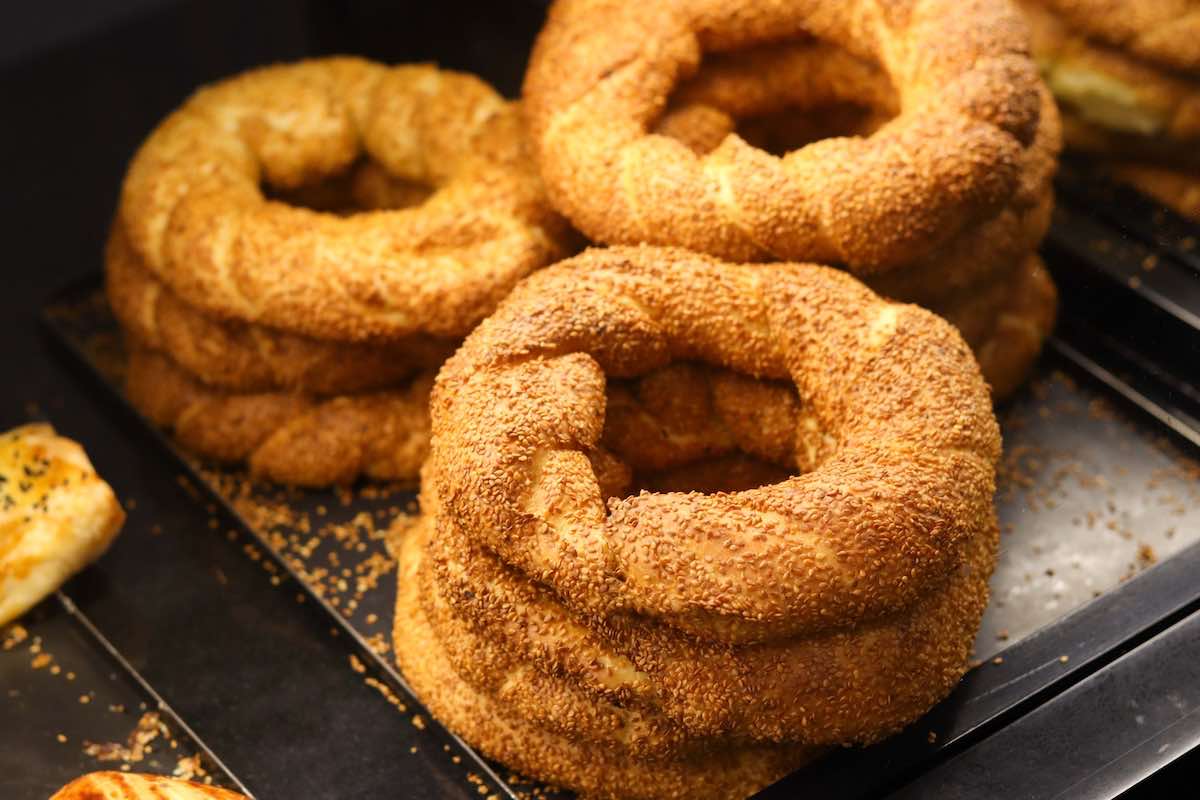Recipes
Turkish Simit


Let's find out how to prepare simit, Turkish sesame donuts, a typical street food with a centuries-old history.
Simit is one of the most beloved symbols of Turkish cuisine, a crunchy, golden ring-shaped bread covered in toasted sesame seeds . This delicious street food , often referred to as the "Turkish bagel", is an essential element of breakfast in Turkey, but can also be enjoyed as a snack at any time of the day.
Traditionally, it is accompanied by fresh cheese, olives and a cup of hot Turkish tea, the famous chai . In Turkey it is almost impossible not to come across street vendors (the simitchi) who wander the streets holding an entire tray of bread donuts directly on their heads.

Ingredients
For the simits
- Flour 00 – 300 g
- Water – 150 g
- Extra virgin olive oil – 15 g
- Brewer's yeast – 5 g
- Salt – 1 tsp
For coverage
- Water – 200 ml
- Honey – 2 tablespoons
- Sesame seeds – to taste
Preparation
How to prepare Turkish simit recipe
First, dissolve the yeast and sugar with a little water.
In a bowl, combine the flour, pour in the water with the yeast and start kneading with a spoon. Then add the remaining water , salt and oil . When the dough begins to take consistency, finish working it on the pastry board.
Form a ball and leave it to rise covered in cling film, still in the bowl, for at least 2 hours. The mixture should double.
Divide the dough into six parts and work each of them until you obtain a cord with a maximum diameter of one centimeter. Fold it into a U , roll it up on itself, then close it like a donut . Leave to rise for 30 minutes .
Prepare the covering liquid by mixing the water and honey . Dip your simit or brush them with the help of a pastry brush, then cover them with sesame seeds .
Bake in the oven at 200°C for 20-25 minutes . They should be well golden.
In more traditional recipes, the covering that allows the sesame seeds to remain attached is made with molasses or with a sort of caramel based on water and sugar as seen in this video . The rest of the process doesn't change and even our fastest technique is super effective.
This is certainly not the only typical delight of Turkish cuisine which, when it comes to bread and substitutes, is second to none. For a dive into the country's magnificent culinary tradition we recommend you try bazlama , Turkish bread cooked in a pan, lamachun , a sort of pizza with meat, and finally gozleme , a sort of bread stuffed with spinach and feta .
Conservation
The simit can be stored in a paper bag for 2 days. You can freeze it for up to 6 months.
Origin and history
The etymology of the name is uncertain and historians have identified several terms from which it could derive: Samīd , meaning refined flour; Simsin , meaning sesame; Simithane , i.e. flour storage. To discover its origin, however, we need to go back in time almost 500 years.
Some commercial documents dated 1525 are the only sources that attest to the existence of this bread donut covered in sesame seeds. The era is that of the Ottoman Empire and its sultan Suleiman the Magnificent . In fact, legend has it that the monarch, during the Ramadan period, used to give the guards one of these donuts at the end of the fast, as a sign of gratitude.
In "The Book of Travels" by Evliya Çelebi, a traveler who explored the empire far and wide, it is said that in the early 1600s there were over 70 bakeries specialized in the production and sale of simit. Today as then, this bread is the symbol of the middle and lower class and is sold along the streets, plain or stuffed, at the cost of a few (Turkish) liras.
Today as then, it is the street vendors who carry the simit around the streets, on red carts or on trays kept expertly balanced on their heads, at the call of “ Taze simit!/Taze gevrek ” (fresh bread) or “ Sicak, sicack ” (hot, freshly made). Once upon a time, the last batch was bought when returning from work and the street vendors were easily recognizable due to the presence of a lantern on the top of a stick on which the simit were stacked.
Riproduzione riservata © - WT












